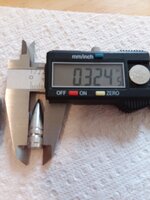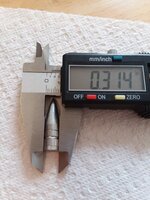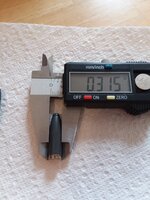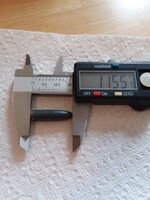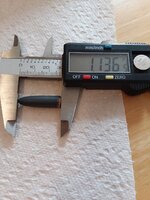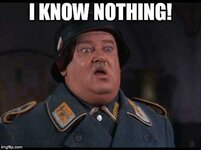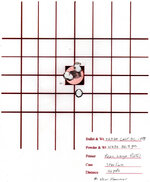Gold Supporter
- Messages
- 24,529
- Reactions
- 37,179
The most common benefit of powder coated cast bullets is reduced leading. I am interested in other benefits that powder coating bullets may provide.
I bought a bunch of light 308cal jacketed bullets and plan on trying some in 7.62x39 barrels. The standard 7.62x39 bullets are usually .310/.311 in diameter. Powder coating the 308 jacketed bullets would increase the diameter of the bullet and may provide increased accuracy.
This could also work on .355 jacketed, plated or cast bullets for use in 38cal pistol/rifle or 35cal rifle cartridges.
An extreme test would be to try powder coating some .257 jacketed bullets for use in 264 diameter cartridges. This would require a coating thickness of about 4mils which would be very easy to do. The big question would be, will the powder coating engrave in the rifling and make up the thickness of a very undersized bullet? Also will the thick coat of powder hold back the pressure behind the bullet?
People are rocketing powder coated cast bullets at higher speeds than plated bullets will withstand. I think by powder coating a plated bullet, it might be able to withstand speeds equal to or greater than a powder coated cast bullet.
What types of tests would you like to see to demonstrate whether these ideas are valid or not? Is there somebody with a good chronograph that would help me test out the various coated bullet types at the range?
Edit: Another benefit of powder coating jacketed and plated bullets might be reduced copper fouling?
I bought a bunch of light 308cal jacketed bullets and plan on trying some in 7.62x39 barrels. The standard 7.62x39 bullets are usually .310/.311 in diameter. Powder coating the 308 jacketed bullets would increase the diameter of the bullet and may provide increased accuracy.
This could also work on .355 jacketed, plated or cast bullets for use in 38cal pistol/rifle or 35cal rifle cartridges.
An extreme test would be to try powder coating some .257 jacketed bullets for use in 264 diameter cartridges. This would require a coating thickness of about 4mils which would be very easy to do. The big question would be, will the powder coating engrave in the rifling and make up the thickness of a very undersized bullet? Also will the thick coat of powder hold back the pressure behind the bullet?
People are rocketing powder coated cast bullets at higher speeds than plated bullets will withstand. I think by powder coating a plated bullet, it might be able to withstand speeds equal to or greater than a powder coated cast bullet.
What types of tests would you like to see to demonstrate whether these ideas are valid or not? Is there somebody with a good chronograph that would help me test out the various coated bullet types at the range?
Edit: Another benefit of powder coating jacketed and plated bullets might be reduced copper fouling?
Last Edited:











